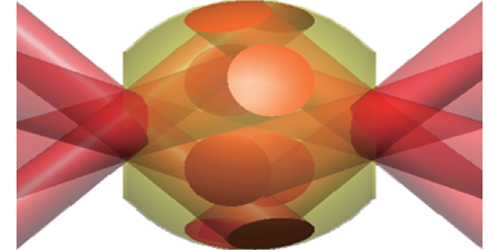Neutrons On-Demand from Laser Fusion
Neutron sources have many uses: from probing the interior of a material to locating underground mineral resources. Laser-driven fusion reactions are one way to produce neutrons, but current techniques are either inefficient or unreliable. Jie Liu of the Institute of Applied Physics and Computational Mathematics in China and colleagues have developed a robust new scheme that uses lasers to induce fusion reactions in a capsule containing heavy hydrogen fuel. In preliminary tests, this method produced around a billion neutrons per laser shot, which is a factor of 100 better than similar methods.
Several neutron sources, such as high-energy accelerators and fission reactors, provide high-intensity beams for materials studies. However, the desire for smaller-scale sources has focused attention on laser-based techniques. One scheme involves shining a laser pulse on clusters of hydrogen isotopes. The clusters are ionized and subsequently collide, inducing fusion reactions that release neutrons, but the yields are generally too low for many applications.
The new method from Liu and colleagues is a variation on inertial confinement fusion (ICF), which aims for self-sustaining fusion reactions through the laser bombardment of hydrogen fuel pellets. Being developed at the National Ignition Facility and elsewhere, ICF can produce very high neutron yields, but it has been plagued by instabilities. The Chinese group avoids these problems by adopting a different target geometry. Rather than a pellet, they use a spherical capsule whose inner surface is lined with a thin fuel layer. Incoming laser light heats the fuel, causing it to implode and fuse in the center of the capsule. Experiments with 6.3-kilojoule laser pulses produced up to a few billion neutrons, but a stronger laser and more neutron-rich fuel could increase the yield by a factor of 1000 or more.
This research is published in Physical Review Letters.
–Michael Schirber
Michael Schirber is a Corresponding Editor for Physics based in Lyon, France.





